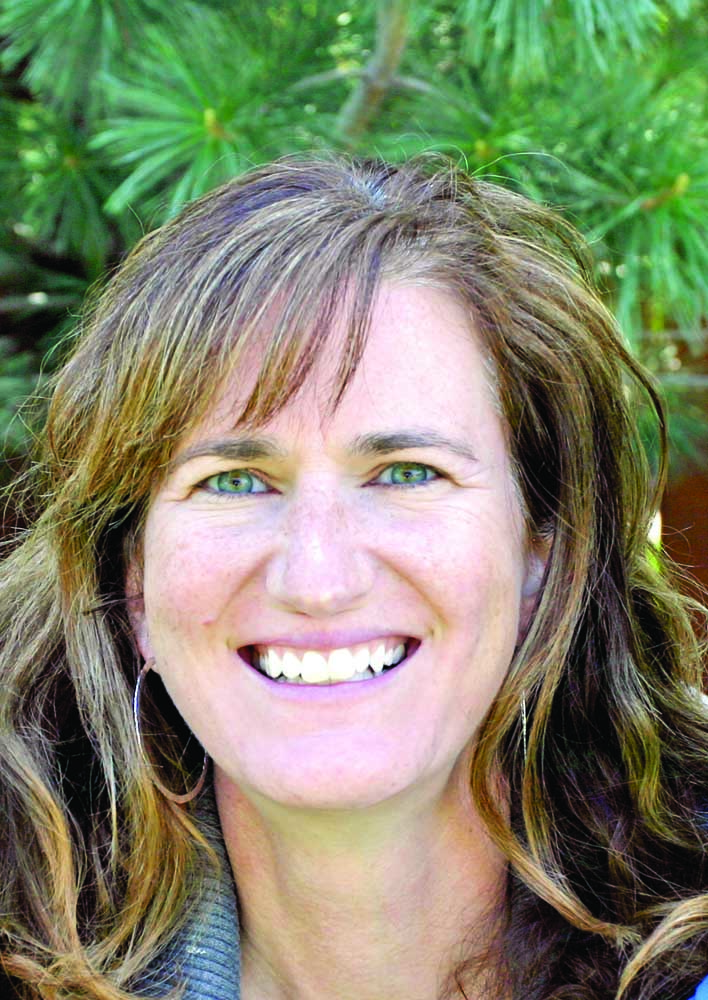Garden CALENDAR Calendar
Published 12:00 am Saturday, September 10, 2016

- Garden Calendar
september
Harvest beans, broccoli, cabbage, carrots, chard, cucumbers, leeks, lettuce, potatoes, and radishes.
Plant asters, mums, pansies, and ornamental kale for fall color. The Michaelmas daisy or New York aster varieties (Aster novi-belgii) provide great fall color for central Oregon.
Harvest plums, pears, and Asian pears if ready.
Having trouble with voles or other wildlife in your landscape? The University of Nebraska has an excellent website that provides management information on many of our most troublesome critters. To check out this leading resource go to: http://icwdm.org/handbook/index.asp
Deep water your trees, shrubs and perennials every five to seven days.
Kentucky bluegrass, perennial ryegrass, and tall fescues are some of the better choices for seeding or sod in Central Oregon. Consider a blended mix of grass types for drought tolerance. For more information on establishing a new lawn go to http://extension.oregonstate.edu/deschutes/sites/default/files/ec1550.pdf
Water your lawn approximately three times a week at 1 to 2 inches per week.
Dethatch or aerate your lawn if necessary. Thatch is a layer of living and dead grass stems and roots. If your thatch layer is a half inch or greater, it can prevent water, air, and nutrients from penetrating the soil and reaching the roots of your grass; resulting in dry spots. Dethatching allows new grass shoots to grow in thick and lush. Dethatching should be done every other year, particularly in lawn consisting of 100 percent Kentucky Bluegrass. Aeration, the process that pulls out plugs should also be done every other year in spring or fall. This process helps relieve compaction and opens up the soil for adding soil amendment or reseeding.
In late September, plant spring flowering bulbs such as daffodils, tulips and crocus. Work phosphorus into the soil below the bulbs. Remember when purchasing bulbs, the size of the bulb is directly correlated to the size of the flower yet to come in spring.
october
Interested in becoming an OSU Master Gardener? Applications for the class of 2017 will be available this month. Contact 541-548-6088 or go online at http://extension.oregonstate.edu/deschutes/ to download an application.
Are you seeing webbing in your trees? It may be fall webworm. For a small population prune out larvae and webbing. For larger population use Bt (Bacillus thuringiensis) when larvae first appear.
Water and mow your lawn minimally.
At the end of October into November, blow out your irrigation system for the winter.
At the end of the month apply a “winterizer” fertilizer on your lawn at a rate of two lbs of nitrogen per 1,000 square feet, using a soluble or mixed soluble slow release nitrogen fertilizer.
Spread 2 to 4 inches of compost or mulch on top of your vegetable garden.
Harvest and store apples; keep at about 40 degrees, moderate humidity.
Pick your green tomatoes before a heavy frost hits them. Only mature green tomatoes can be ripened off the vine. Mature tomatoes are light green in color with a reddish tinge on the blossom end. The pulp inside of a mature tomato should be jelly-like, not firm. To ripen, wrap them individually in newspaper and place them in a box so they are not touching one another in a room at 60 to 70 degrees. Check them every 3 to 4 days for rotten ones. They will ripen over a 3 to 4 week period.
Save seeds from the vegetable and flower garden, dry and store.
Harvest sunflower heads; use seed for birdseed by hanging the flowerheads upside from a structure or tree. The birds will get a tasty treat and you will get surprise sunflowers popping up next year. You can also toast the sunflower seeds and treat yourself.
Cut back your perennials to 1.5 inches above the ground and use pine needles or wood bark mulch to protect the roots through winter. Perennials that prefer additional mulch for protection include pincushion flower (Scabiosa), lavender (Lavendula), and veronica.
Regular roses need special winter care including winter mulch. For more information check out the following rose care publication at: http://ir.library.oregonstate.edu/xmlui/bitstream/handle/1957/19854/ec1624-e.pdf
Pull up all dead plant materials, rake diseased leaves and remove all fallen branches. This will prevent insects and disease from overwintering in your landscape.
Leave your ornamental grasses up in winter to provide winter texture in the landscape.
Prune your evergreen and conifers.
november
Plant a cover crop in your garden area to come up next spring. You can plant winter wheat, cereal rye, winter rye, triticale, winter barley, or winter peas.
Plant a window garden.
Place mulch around berries for winter protection. Cover strawberry plants with clean straw to insulate them through the winter.
Store garden fertilizers and supplies in a safe, dry place, out of the reach of children.
Start your compost pile for next fall. Do not use grass clippings or plant debris that may have pesticide residues, disease or insects in your compost pile.
Wrap the trunks of young, thick barked trees (maples, aspen, ash) with paper tree wrap to prevent sunscald. Remove it in spring (April). Wrap your new trees 2 to 3 years in a row until the outer bark has thickened.
Now is a good time to remove and discard paper wasp nests from the eaves of your home. At this time of year the nests may be empty. Paper wasps only occupy their nests for one season. Remove at dusk when wasp activity slows down.








